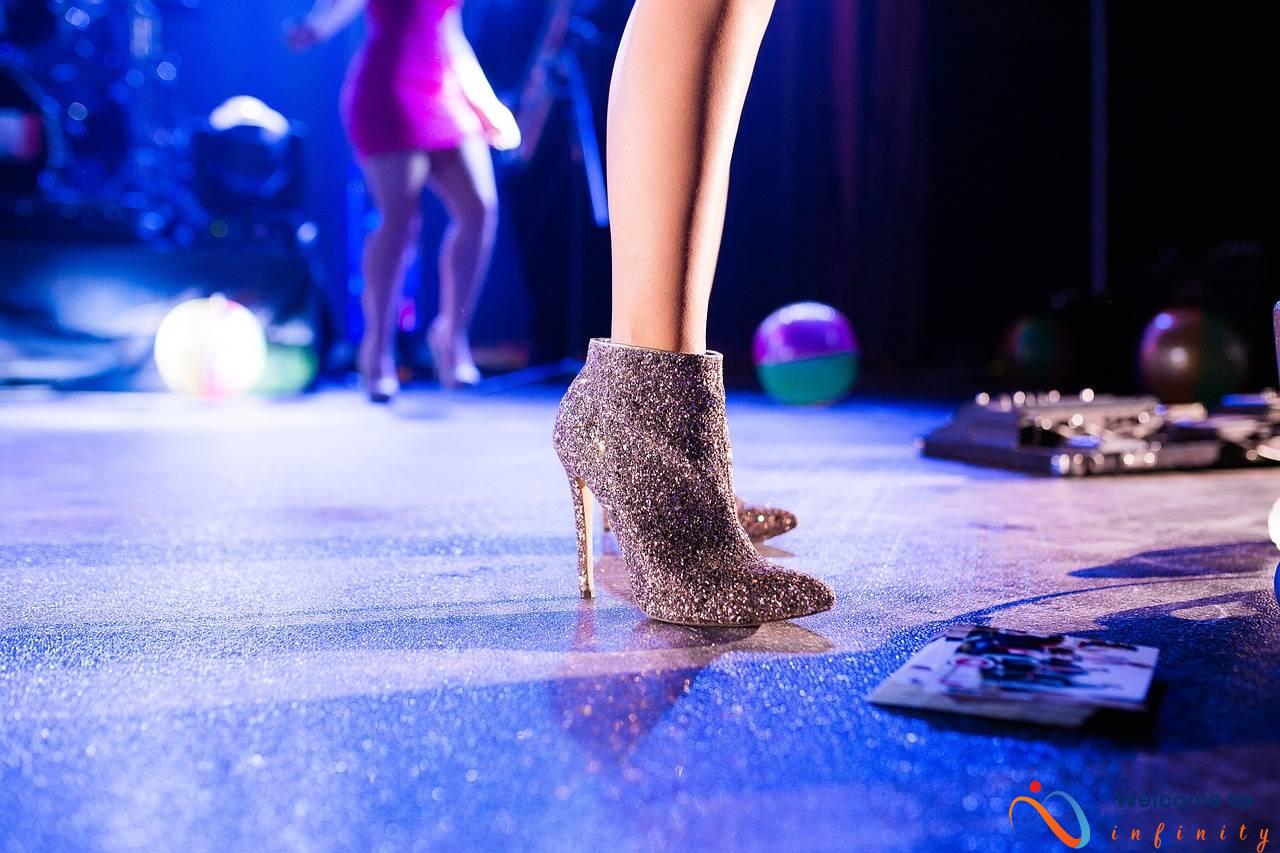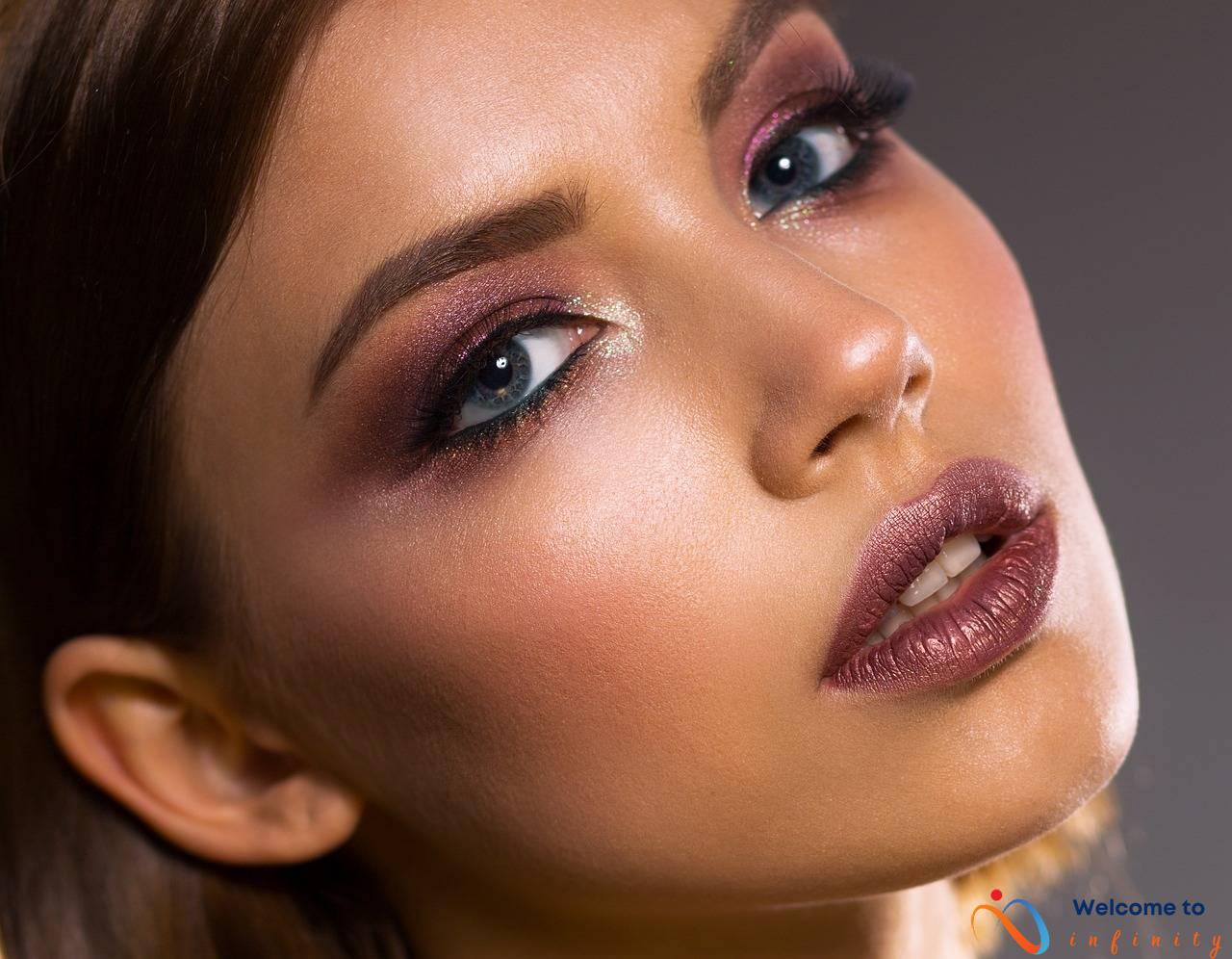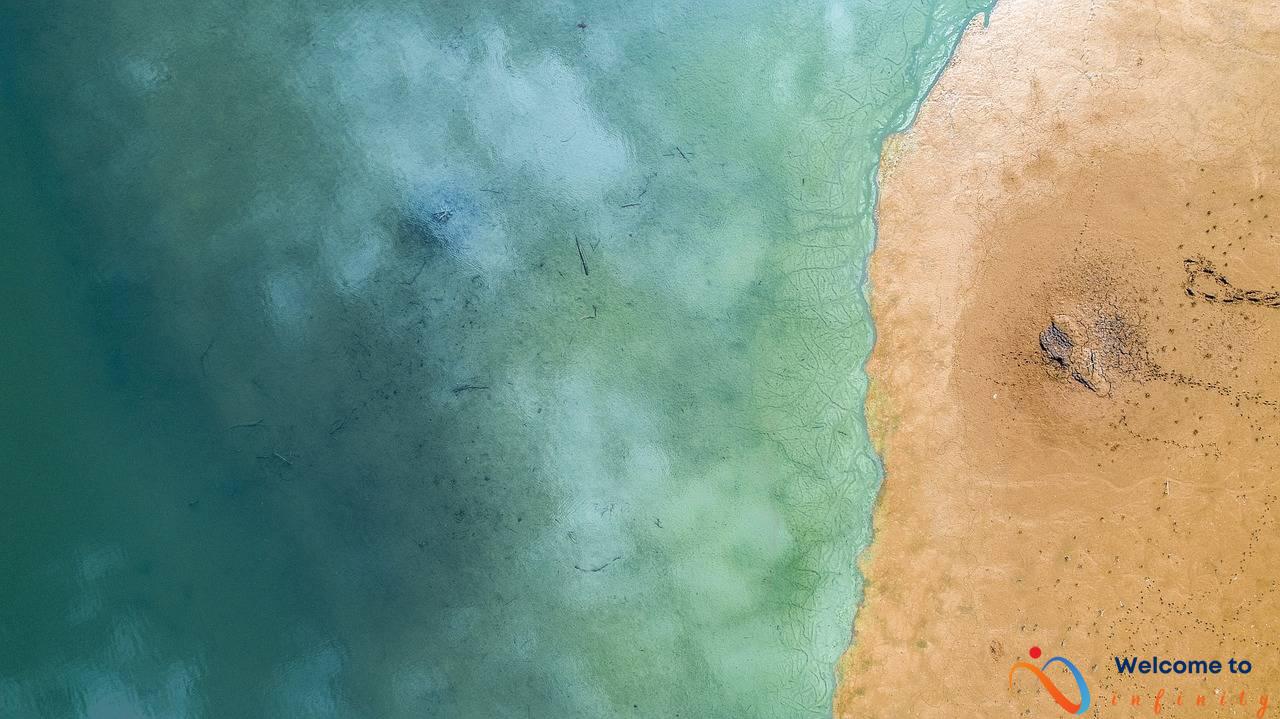Good skincare habits are essential for maintaining healthy, youthful skin, regardless of your age. Whether you're in your 20s, 30s, 40s or older, it's never too early or too late to take care of your skin. In this article, we'll share tips and tricks that will help you keep your skin looking youthful at any age.
In your 20s, establishing a reliable skincare routine is crucial. It's a time when you should focus on preventing damage that could appear later in life. Start by cleansing your skin twice a day and using a moisturizer that suits your skin type. Don't forget to use sunscreen daily to protect your skin from sun damage.
As you enter your 30s, changes in your hormones can result in significant changes in your skin, such as increased skin dryness and fine lines. To combat these signs of aging, consider products that contain retinoids, which can help reduce wrinkles and fine lines. Also, professional treatments like chemical peels and facials can help your skin maintain its vitality.
- Use products that contain antioxidants to reduce skin damage
- Exfoliate regularly to remove dead skin cells
- Stay hydrated by drinking enough water
In your 40s and beyond, your skin requires increased attention as the skin's natural ability to retain moisture decreases. Moisturizers become even more critical at this stage. You can add ingredients such as hyaluronic acid to your skincare routine to improve your skin's moisture levels.
Age spots and uneven skin tone can become an issue as you age. Vitamin C is a potent antioxidant that can reduce the appearance of age spots and uneven skin tone, and laser treatments can also be effective in solving these issues.
Finally, remember that healthy skin is not just about the products you use. Your lifestyle habits, such as smoking and excessive exposure to the sun, can harm your skin. Maintain a healthy lifestyle, and you will see your skin looking radiant at any age.
Skincare in Your 20s
If you're in your 20s, this is the time to lay the foundation for healthy, youthful skin in the years ahead. The skincare routine you establish now can have a lasting impact on the appearance and health of your skin as you age. But with so many products and treatments on the market, it can be overwhelming to know where to start.
The key to a strong skincare routine in your 20s is to keep it simple and consistent. Start by cleansing your skin both morning and night to remove dirt and oil buildup. Choose a gentle, non-stripping cleanser that won't disrupt your skin's natural moisture balance. After cleansing, apply a lightweight moisturizer with SPF to protect your skin from the sun's damaging UV rays.
In addition to cleansing and moisturizing, consider incorporating a targeted treatment like a vitamin C serum to brighten and even out your skin tone. You can also use an eye cream to prevent the appearance of fine lines and wrinkles around the delicate eye area.
Finally, don't forget to prioritize your overall health and well-being. Eating a healthy diet, staying hydrated, and getting enough sleep can all impact the look and feel of your skin.
Skincare in Your 30s
As you say goodbye to your twenties and begin your 30s, it's essential to make modifications to your skincare routine to cater to your changing skin. By this time, skin damage that started during your younger years may become more visible, and signs of aging may start becoming more apparent. To keep your skin healthy and youthful, making changes to your skincare routine and using different products may be necessary.
The first thing to do is to keep your skin hydrated. In your 30s, your skin may become drier, so it's essential to moisturize your skin every day. Choose a moisturizer that caters to your skin type and concerns. For example, if you have dry skin, look for a more intensive moisturizer with ingredients like hyaluronic acid or ceramides that help retain your skin's moisture.
Another crucial aspect of your skincare routine as you enter your 30s is fighting fine lines and wrinkles. This is where anti-aging products come in as they contain ingredients that help slow down the aging process. Retinoids are a popular ingredient to look for in anti-aging products. They help in reducing fine lines and wrinkles, preventing acne, and improving skin texture.
If you want a more aggressive approach to combating signs of aging, consider professional treatments like chemical peels and facials. These treatments help exfoliate your skin and boost collagen production, making your skin appear younger and healthier. However, it's essential to talk to your dermatologist before undergoing these treatments to ensure that they are suitable for your skin type.
Lastly, it's critical to remember the importance of sun protection in your 30s. Sun damage is one of the leading causes of premature aging, so wearing a broad-spectrum SPF 30 or higher sunscreen every day can help protect your skin from harmful UVA and UVB rays. Additionally, avoid going out during the sun's peak hours, and wear sun-protective clothing like hats and long-sleeved shirts if possible.
Fighting Fine Lines and Wrinkles
As you enter your 30s, you may notice fine lines and wrinkles starting to appear. While it's important to remember that aging is a natural part of life, there are steps you can take to reduce the signs of aging on your skin. Here are some products and treatments that can help:
- Retinoids: These highly effective products contain Vitamin A and are known to boost collagen production, reduce fine lines, and even out skin tone. However, they can be harsh on the skin and should be used sparingly in combination with a moisturizer and sunscreen.
- Facial Treatments: Chemical peels, microdermabrasion, and other facial treatments can help to exfoliate the skin, promote cell turnover, and reduce the appearance of wrinkles.
Additionally, it's important to maintain a healthy lifestyle by staying hydrated, eating a balanced diet, and getting plenty of sleep. Smoking and excessive alcohol consumption can also contribute to premature aging, so be sure to limit your intake. By taking care of your skin and making smart lifestyle choices, you can help prevent signs of aging and maintain a youthful glow well into your 30s and beyond.
Retinoids
Retinoids are a type of vitamin A derivative that has been shown to have multiple benefits for the skin such as reducing fine lines and wrinkles, improving skin texture, and boosting collagen production. These benefits make retinoids an essential ingredient in any anti-aging skincare routine.
Retinoids are available in different strengths and formulations, including prescription-strength options. When starting to use retinoids, it's essential to begin slowly and build up to higher strengths to avoid irritation. It's also crucial to use a broad-spectrum sunscreen during the day as retinoids can increase the skin's sensitivity to the sun.
In addition to their anti-aging benefits, retinoids can also help with acne and acne scarring by unclogging pores and reducing inflammation. They can also help improve skin tone and texture by stimulating cell turnover, promoting a more youthful appearance.
When choosing a retinoid product, look for ones that contain a stable form of the ingredient to ensure effectiveness. It's also essential to note that some retinoids can cause dryness and irritation, so it's vital to moisturize and hydrate the skin adequately.
Overall, incorporating retinoids into your skincare routine can benefit your skin in numerous ways. It's best to consult with a dermatologist to determine the ideal strength and formulation for your skin type and concerns. With regular use, retinoids can help you achieve a more youthful and radiant complexion.
Facial Treatments
Professional facial treatments can be an effective way to boost your skin's health in your 30s. Chemical peels are a popular treatment that can remove dead skin cells and improve the appearance of fine lines and wrinkles. They work by applying a solution to the skin, which causes the top layer to peel off, revealing smoother, more youthful-looking skin. Chemical peels can also help with acne scars and hyperpigmentation.
Facials are another way to improve your skin's health and appearance. They can help reduce redness, unclog pores and improve overall skin tone. Facials often involve a series of steps, including cleansing, exfoliating, steaming, and moisturizing, and can be tailored to your individual skin concerns and needs. Some popular facials for 30-somethings include anti-aging facials and oxygen facials. Anti-aging facials often incorporate ingredients like collagen and antioxidants to promote firmness and elasticity, while oxygen facials use a stream of pressurized oxygen to deliver topical products to the skin, resulting in a bright, glowing complexion.
It's important to note that while these treatments can be beneficial, they should be used in conjunction with a daily skincare routine that includes SPF protection and regular exfoliation. Many professionals recommend scheduling a monthly facial to keep your skin healthy and glowing.
Preventing Sun Damage
Sun protection is one of the most crucial steps in any skincare routine, regardless of age. In your 30s, however, protecting your skin from harmful UV rays becomes even more critical as sun damage can lead to premature aging. It's important to know that UVA and UVB rays can cause damage to the skin, including fine lines, wrinkles, age spots, and hyperpigmentation.
To prevent sun damage, it's recommended to use a broad-spectrum sunscreen with at least SPF 30 every day, even on cloudy days. Applying sunscreen should be the last step in your morning skincare routine and reapplied every two hours if you're outdoors. Wearing sun-protective clothing such as hats and long-sleeved shirts can provide additional protection.
To ensure that you're adequately covered, use about a shot glass' worth of sunscreen for your entire body and a pea-size amount for your face. If you have sensitive skin, look for sunscreens that use physical blockers, such as zinc oxide or titanium dioxide, as they tend to be gentler on the skin.
In addition to sunscreen, it's important to be cautious of sun exposure during peak hours, generally between 10 a.m. to 4 p.m., and avoid tanning beds entirely. While getting a glowing tan might seem desirable, the long-term damage to your skin is not worth the temporary results.
Incorporating sun protection into your daily routine is a small but significant step towards preserving your skin's youthful appearance for years to come. Remember, sun protection should be a part of your skincare regimen, no matter your age or skin type. So, always use sunscreens and protective clothing to block UVA and UVB rays from entering your skin and prevent aging.
Broad Spectrum SPF
When it comes to sun protection, not all sunscreens are created equal. Broad spectrum sunscreens protect against both UVA and UVB rays, which are responsible for skin damage, premature aging, and skin cancer. Using a broad spectrum sunscreen on a daily basis can help prevent these harmful effects and keep your skin looking youthful.
When choosing a broad spectrum SPF, look for a sunscreen with at least SPF 30 and labeled as “broad spectrum” on the packaging. Apply it generously to all exposed skin, including your face, neck, and hands. Remember to reapply every two hours, or more frequently if you are sweating or swimming.
In addition to using broad spectrum sunscreen, incorporating other sun protection measures can further reduce your risk of sun damage. Wearing protective clothing, such as hats, long-sleeved shirts, and sunglasses, can help shield your skin from harmful rays. Seeking shade whenever possible, especially during peak sunlight hours, can also provide extra protection.
Ultimately, using a broad spectrum sunscreen should be a crucial step in your daily skincare routine. Not only will it protect your skin from damage and prevent premature aging, but it will also keep your skin looking healthy and radiant for years to come.
Sun-Protective Clothing
Protecting your skin from the sun is crucial for preventing premature aging and reducing the risk of skin cancer. While using broad-spectrum sunscreen is essential, wearing sun-protective clothing is another effective way to shield your skin from harmful UV rays. But how do clothing choices affect sun damage prevention?
Choosing the right fabric is key. Not all clothing fabrics provide equal sun protection. Some fabrics are woven more tightly, creating a better barrier against the sun. Look for clothing made with tightly woven fabrics such as denim, canvas, and polyester. These fabrics offer better protection than lighter, more porous materials like cotton or linen.
Color is also a factor to consider. Darker colors like black, navy, and dark green absorb more UV rays than lighter colors, which allows less radiation to penetrate the skin. So, if you're planning to spend extended periods outside, consider wearing dark-colored clothing.
Additionally, coverage is essential. Long sleeves, pants, and skirts offer more coverage, blocking more UV rays from reaching your skin. Wide-brimmed hats and sunglasses can also help protect your face and eyes from the sun.
If you're still unsure about which clothing items provide the best sun protection, check the label. Some clothing brands now include an Ultraviolet Protection Factor (UPF) rating, which rates the level of sun protection the clothing offers. A UPF rating of 50 or above provides the most significant level of protection.
In addition to wearing sun-protective clothing, remember to use a broad-spectrum sunscreen with an SPF of 30 or higher and reapply every two hours or immediately after sweating or swimming. By taking precautions such as limiting your sun exposure and wearing appropriate clothing, you can protect your skin and keep it looking youthful and healthy.
Skincare in Your 40s and Beyond
As we age, our skin undergoes changes that require adjustments to our skincare routine. In our 40s and beyond, it becomes even more important to take proper care of our skin if we want to maintain a youthful appearance. Here are some tips for adjusting your skincare routine as you age:
One of the most important things you can do for your skin as you age is to keep it hydrated. As we get older, our skin loses moisture more easily, which can lead to dryness and a dull complexion. To combat this, make sure to drink plenty of water and use hydrating skincare products. Look for moisturizers containing hyaluronic acid, glycerin, or ceramides.
Choosing the right moisturizer is also important. If you have dry skin, look for a thicker cream that will provide deep hydration. If you have oily skin, look for a lighter lotion that won't clog your pores. And if you have combination skin, consider using a different moisturizer for different areas of your face.
As we age, we may start to notice age spots and uneven skin tone. This can be caused by sun damage, hormonal changes, and other factors. To address this, consider incorporating Vitamin C into your skincare routine. Vitamin C is a powerful antioxidant that can help to brighten your complexion and reduce the appearance of hyperpigmentation. You can also try professional laser treatments for more dramatic results.
Hydration is Key
Hydration is an essential aspect of any skincare routine, regardless of age. As we age, our skin tends to become drier, making it more prone to fine lines, wrinkles, and other skin concerns. By keeping your skin adequately hydrated, you can promote a healthy and youthful appearance.
One way to incorporate hydration into your skincare routine is by using a moisturizer. Moisturizers can help prevent water loss from the skin, keeping it hydrated and supple. When choosing a moisturizer, consider your skin type and any specific concerns you may have, such as anti-aging or acne-fighting.
Another way to keep your skin hydrated is by drinking plenty of water throughout the day. When you are dehydrated, your skin can appear dull and lackluster. By drinking at least eight glasses of water a day, you can help your skin look its best.
In addition to using a moisturizer and staying hydrated, incorporating hyaluronic acid into your skincare routine can also help keep your skin hydrated. Hyaluronic acid is a natural substance found in the skin that helps retain moisture. By using a serum or moisturizer with hyaluronic acid, you can help your skin retain moisture and improve its overall appearance.
Don't forget to also consider the foods you eat, as they can play a significant role in the hydration of your skin. Fruits and vegetables with a high water content, such as watermelon, cucumbers, and citrus fruits, can help keep your skin hydrated from the inside out.
Overall, incorporating hydration into your skincare routine is essential for maintaining a youthful and healthy appearance. By using a moisturizer, drinking plenty of water, incorporating hyaluronic acid, and eating a balanced diet, you can help keep your skin hydrated and looking its best.
Moisturizers
Moisturizers are an essential part of a skincare routine in your 40s and beyond. They help to keep your skin hydrated, lock in moisture, and provide a protective barrier against external aggressors that can contribute to premature aging. With so many moisturizer options available on the market, it's important to choose one that is suitable for your skin type and addresses your specific concerns.
For dry or mature skin, look for moisturizers that contain heavy-hitting ingredients like hyaluronic acid, ceramides, and glycerin. These ingredients work together to hydrate the skin and improve its texture and elasticity. If you have oily or acne-prone skin, opt for lightweight, non-comedogenic moisturizers that won't clog pores or contribute to breakouts.
Another factor to consider when choosing a moisturizer is your skin's sensitivity level and any existing skin concerns. For example, if you have rosacea or eczema, look for moisturizers that are fragrance-free and contain ingredients like colloidal oatmeal or aloe vera, which are known for their soothing properties. If you have hyperpigmentation or age spots, consider a moisturizer that contains ingredients like vitamin C or niacinamide, which can help brighten and even out the complexion.
When applying moisturizer, it's important to use the right amount. A dime-sized amount is usually enough for the face and neck, and be sure to massage it in gently using upward and outward strokes. If you have particularly dry areas, like around the eyes or mouth, you can apply an extra thin layer of moisturizer to those areas for added hydration.
In summary, finding the right moisturizer for your skin type and concerns is important for maintaining healthy, youthful-looking skin in your 40s and beyond. Consider the ingredients and sensitivity levels of your skin, and use the appropriate amount during application. With the right moisturizer and consistent use, you can help keep your skin looking and feeling its best.
Tackling Age Spots and Uneven Skin Tone
As we age, our skin undergoes a number of changes, including the development of age spots and uneven skin tone. Fortunately, there are a variety of products and treatments available to help tackle these concerns. One of the most effective ingredients for combating hyperpigmentation is Vitamin C. This powerful antioxidant can help to reduce the appearance of age spots and improve overall skin tone. Look for serums or creams containing Vitamin C, and consider using them as part of your daily skincare routine.
In addition to topical treatments, professional laser treatments can also be highly effective for reducing the appearance of age spots and uneven skin tone. Laser skin resurfacing can help to remove damaged skin cells and stimulate collagen production, resulting in smoother, more radiant skin. However, it's important to note that laser treatments can be quite expensive and may require multiple sessions for optimal results.
If you're looking for a more affordable option, over-the-counter products like skin brightening creams and exfoliating scrubs can also be helpful in addressing age spots and uneven skin tone. Look for products containing ingredients like kojic acid, licorice extract, or alpha hydroxy acids (AHAs), which can help to brighten and even out skin tone over time. Just be sure to follow product directions carefully and avoid any products that are too harsh or abrasive for your skin type.
Ultimately, the key to tackling age spots and uneven skin tone is consistency. Whether you opt for professional treatments, over-the-counter products, or a combination of both, it's important to stick with a regular routine in order to see results. And as always, don't forget to protect your skin from further damage with a daily application of broad-spectrum sunscreen.
Vitamin C
Vitamin C is a powerful antioxidant that can do wonders for your skin. By incorporating it into your skincare routine, you can help combat sun damage and hyperpigmentation. Vitamin C works by neutralizing free radicals, which are molecules that can cause damage to your skin. This, in turn, can reduce the appearance of fine lines, wrinkles, and dark spots.
One of the best ways to get Vitamin C into your skincare routine is by using a serum. Serums are highly concentrated and are easily absorbed by the skin. Look for a serum that contains at least 10% Vitamin C for best results. You can also find Vitamin C in moisturizers, toners, and facial masks.
In addition to using products that contain Vitamin C, it's also important to eat a balanced diet that is rich in antioxidants. This can help support your skin's health and overall appearance. Foods that are high in Vitamin C include citrus fruits, strawberries, kiwi, bell peppers, and broccoli.
When using Vitamin C in your skincare routine, be sure to wear sunscreen during the day. While Vitamin C can help protect against sun damage, it's not a replacement for sunscreen. By incorporating Vitamin C into your skincare routine and protecting your skin from the sun, you can help keep your skin looking healthy and youthful for years to come.
Laser Treatments
Laser treatments have become increasingly popular amongst those seeking to reduce the appearance of age spots and uneven skin tone. Laser treatments involve the use of targeted light to penetrate the skin and break up pigmentation or stimulate collagen production.
One type of laser treatment commonly used for age spots is the Q-switched laser. This laser delivers high energy in extremely short pulses, breaking up pigmentation without damaging surrounding skin. Although this treatment can be effective for reducing the appearance of age spots, it may require multiple sessions to see significant improvement.
Another type of laser treatment that can improve skin tone and texture is fractional laser resurfacing. This treatment involves creating microscopic injuries in the skin using laser technology, which stimulates collagen production and helps to reduce the appearance of fine lines and wrinkles. Fractional laser resurfacing can also reduce the appearance of age spots and sun damage, improving overall skin texture and tone.
It's important to note that laser treatments can be expensive and may require downtime for recovery. Additionally, some skin types may be more prone to side effects such as hyperpigmentation or scarring. Therefore, it's important to consult with a dermatologist or licensed professional before undergoing any laser treatments.












